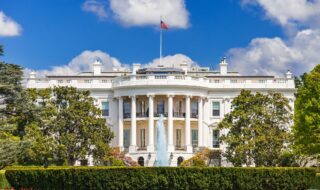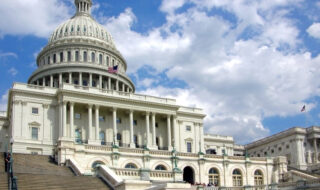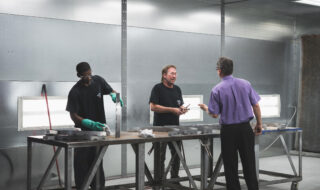August 29, 2022
Questions and Answers with Chief Economist Bill Dunkelberg
Small businesses face serious, unprecedented economic challenges, including the ongoing inflation crisis, labor shortages, low expectations for business conditions, and more. NFIB Chief Economist Bill Dunkelberg answered questions about the issues owners care about:
- Everyone is talking about the rapid rate of inflation. It’s the most cited problem facing small business owners. How could this have been avoided? What should state or federal governments do now?
“Unfortunately, COVID-19 and the world’s response to it, as well as the war in Ukraine are the main culprits of inflation. Federal and state governments can help by lessening the cost constraints of operating a small business by getting rid of onerous regulations and lowering taxes paid by small business owners. Or, at the very least, don’t increase the government directed cost of business operations. Small business owners are having a difficult time managing costs pressures. The government, at any level, should not be an additional threat to this challenge
Inflation is defined as an increase in the average price level of stuff consumers buy. Using a defined basket of goods and services that consumers typically buy, the Bureau of Labor Statistics shops the items each month, calculates the cost of the basket and compares that to the cost of the basket in a previous (month) period – the percentage change (usually an increase) is inflation.
Energy (fuel, electricity, etc.) is a significant part of the basket, making up about 8% of the basket cost. Recently these prices have risen about 33% over the last 12 months. Housing costs make up a third of the basket cost. New house prices advanced 20% over the last year. Overall, the CPI increased 8.5% in July compared to the previous 12 months. This means that $100 saved in a bank account last year to support growth and expansion will only buy $92.5 worth of stuff today. Policies that encourage domestic energy production would lower energy costs. A reduction in inflation would be like a tax cut, providing wide ranging benefits to all small businesses.”
- You wrote that labor costs have skyrocketed and become one of the top problems facing small businesses. What do you attribute that to? What action should the federal government take to help owners with this pressing problem?
“The rising cost of labor is a direct response to a labor shortage, resulting from the COVID-19 pandemic’s impact on workers’ willingness to take a job, those who chose to retire early, and those who transitioned from two income households to one income households. The labor disruption from COVID-19 and subsequent government stimulus programs were immense and are ongoing. Consumers wanted to spend this extra money but fewer goods and services were available, producing inflation. Currently, there are about two open jobs for every one person looking for one. Small business owners are increasing wages to recruit candidates for open positions and retain current employees. The labor market is extremely competitive now and only an increase in the labor force participation rate, a decline in the number of unemployed, or a decline in consumer spending will provide relief.”
- Record-low levels of owners are expressing expectations for better business conditions in the future. What are the effects of such low expectations from owners?
“Small business owners are very pessimistic about the outlook for business conditions. Virtually all owners’ decisions are all about the future. Hiring, capital spending, inventory investment, are driven by expected future developments. Owners are less likely to invest and expand their business if they anticipate business conditions deteriorating in the next six months.”
- If action isn’t taken to address these issues, what do you predict will happen to the small business economy?
“The Federal Reserve has raised interest rates now four times with likely more hikes on the way to help cool the economy and hopefully lower inflation pressures. If successful, that will go a long way to easing the biggest challenge facing around one-third of small business owners. The pervasive staffing shortage issue is arguably a bigger challenge that requires changes in work incentives, education reforms, and technological advances (improvements in worker productivity) to compensate for demographic trends including an aging population and low birth rates.”
NFIB is a member-driven organization advocating on behalf of small and independent businesses nationwide.
Related Articles













